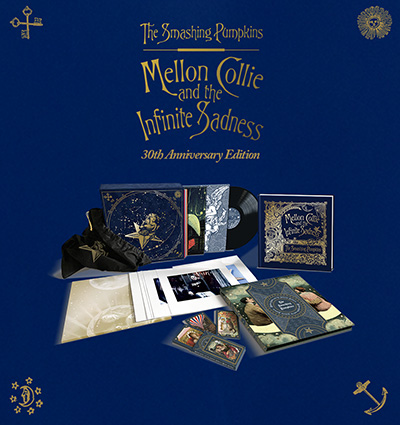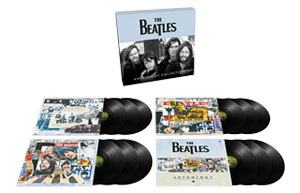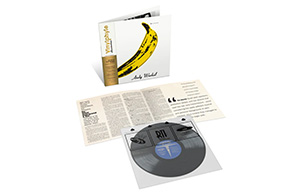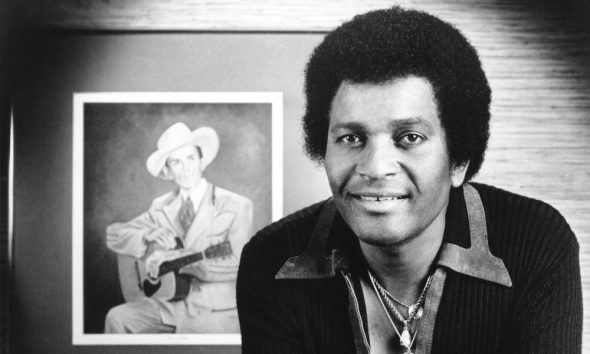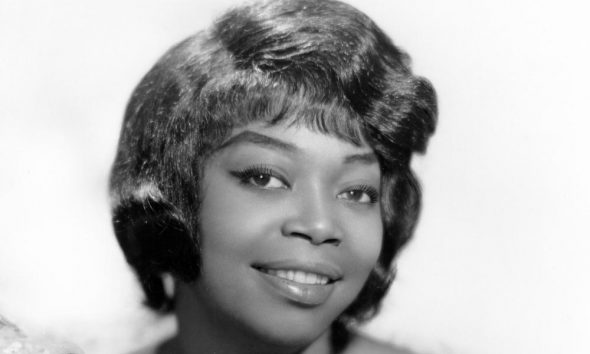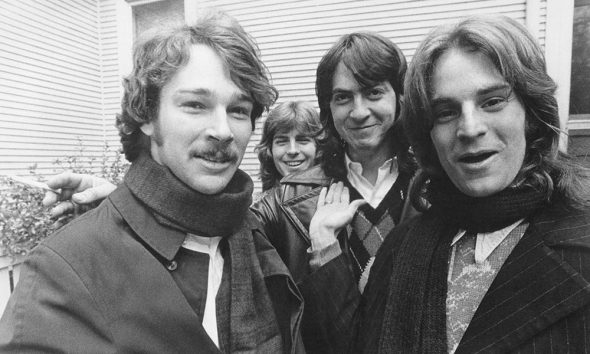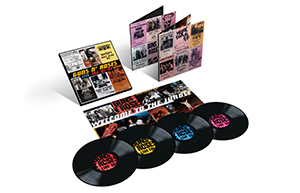The Velvet Underground
The Velvet Underground are one of the most influential rock bands in history, founded by Lou Reed and known for their confrontational rock music.
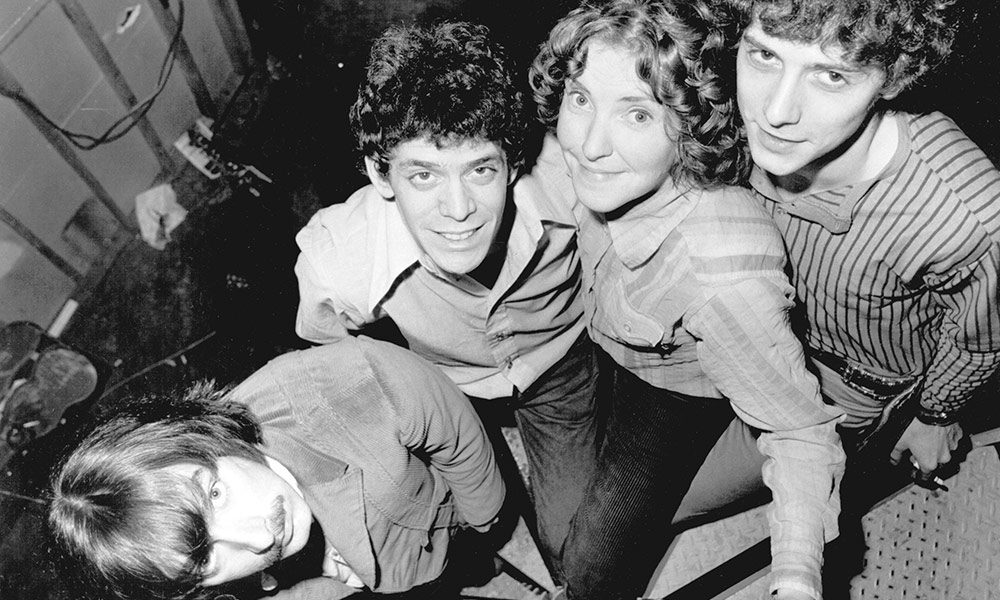
There’s no city in the world other than New York that could have created the Velvet Underground – their coming together with chanteuse, Nico – at the insistence of Andy Warhol – was both inspired and inspirational. The album they created, The Velvet Underground And Nico, is justly considered to be one of the greatest of the rock era.
The Velvet Underground trace their origins to a 1965 assemblage of Lou Reed, John Cale and Sterling Morrison, who called themselves The Primitives, although by the end of the year they had adopted Velvet Underground, the name of a paperback by Michael Leigh about a clandestine subculture of sex that perfectly fitted the band, as Lou Reed had already written Venus in Furs. They recorded a multi-track demo but nothing came of it, despite John Cale giving it to Marianne Faithful in the hope she may give it to Mick Jagger. In early 1966 Maureen ‘Mo’ Tucker took over the drumming duties and her unique approach certainly added to their sound.
Andy Warhol became the band’s manager in 1965 and his reputation helped their profile and got them a recording contract with Verve Records. His insistence that German-born Nico sings three songs on The Velvet Underground And Nico, as well as his genius, all helped to create the art-meets-music template from which later punk would in part be fashioned.
Upon its release in March 1967, The Velvet Underground And Nico made No. 171 on Billboard’s album chart, but legal issues over the back cover meant it had to be withdrawn from sale while the artwork was changed. Commercially, at the time, it never recovered. By the end of 1967, the band had split with Warhol and Nico splitting from the band as they were at work on their follow-up, White Light/White Heat. It fared even less well than their debut. By the time of their third album, The Velvet Underground in 1969, Cale had left to be replaced by Doug Yule. Its poor sales at the time led to the band being dropped by Verve. Hindsight and critical re-appraisal have viewed The Velvet Underground as not just a seminal punk band but also one of the more important bands in the history of rock music.
Few rock groups can claim to have broken so much new territory and maintain such consistent brilliance on record, as the Velvet Underground during their brief lifespan. It was the group’s lot to be ahead of, or at least out of step with, their time. The mid-to-late ’60s was an era of explosive growth and experimentation in rock, but the Velvets’ innovations — which blended the energy of rock with the sonic adventurism of the avant-garde, and introduced a new degree of social realism and sexual kinkiness into rock lyrics — were too abrasive for the mainstream to handle. During their time, the group experienced little commercial success; though they were hugely appreciated by a cult audience and some critics, the larger public treated them with indifference or, occasionally, scorn. the Velvets’ music was too important to languish in obscurity, though; their cult only grew larger and larger in the years following their demise and continued to mushroom through the years. By the 1980s, they were acknowledged not just as one of the most important rock bands of the ’60s, but one of the best of all time, and one whose immense significance cannot be measured by their relatively modest sales.
Historians often hail the group for their incalculable influence upon the punk and new wave of subsequent years, and while the Velvets were undoubtedly a key touchstone of the movements, to focus upon these elements of their vision is to only get part of the story. The group was uncompromising in their music and lyrics, to be sure, sometimes espousing a bleakness and primitivism that would inspire alienated singers and songwriters of future generations.
But their colourful and oft-grim soundscapes were firmly grounded in strong, well-constructed songs that could be as humanistic and compassionate as they were outrageous and confrontational. The member most responsible for these qualities was guitarist, singer, and songwriter Lou Reed, whose sing-speak vocals and gripping narratives have come to define street-savvy rock & roll.
Reed loved rock & roll from an early age and even recorded a doo-wop type single as a Long Island teenager in the late ’50s (as a member of the Shades). By the early ’60s, he was also getting into avant-garde jazz and serious poetry, coming under the influence of author Delmore Schwartz while studying at Syracuse University. After graduation, he set his sights considerably lower, churning out tunes for exploitation rock albums as a staff songwriter for Pickwick Records in New York City.
Reed did learn some useful things about production at Pickwick, and it was while working there that he met John Cale, a classically-trained Welshman who had moved to America to study and perform “serious” music. Cale, who had performed with John Cage and LaMonte Young, found himself increasingly attracted to rock & roll; Reed, for his part, was interested in the avant-garde as well as pop. Reed and Cale were both interested in fusing the avant-garde with rock & roll, and had found the ideal partners for making the vision (a very radical one for the mid-’60s) work; their synergy would be the crucial axis of the Velvet Underground’s early work.
Reed and Cale (who would play bass, viola, and organ) would need to assemble a full band, making tentative steps along this direction by performing together in the Primitives (which also included experimental filmmaker Tony Conrad and avant-garde sculptor Walter DeMaria) to promote a bizarre Reed-penned Pickwick single (“The Ostrich”).
By 1965, the group was a quartet called the Velvet Underground, including Reed, Cale, guitarist Sterling Morrison (an old friend of Reed’s), and drummer Angus MacLise. MacLise quit before the band’s first paying gig, claiming that accepting money for art was a sellout; the Velvets quickly recruited drummer Maureen Tucker, a sister of one of Morrison’s friends.
Even at this point, the Velvets were well on their way to developing something quite different. Their original material, principally penned and sung by Reed, dealt with the hard urban realities of Manhattan, describing drug use, sadomasochism, and decadence in cool, unapologetic detail in “Heroin,” “I’m Waiting for the Man,” “Venus in Furs,” and “All Tomorrow’s Parties.” These were wedded to basic, hard-nosed rock riffs, toughened by Tucker’s metronome beats; the oddly tuned, rumbling guitars; and Cale’s occasional viola scrapes.
It was an uncommercial blend, to say the least, but the Velvets got an unexpected benefactor when artist and all-around pop-art icon Andy Warhol caught the band at a club around the end of 1965. Warhol quickly assumed management of the group, incorporating them into his mixed-media/performance art ensemble, the Exploding Plastic Inevitable. By spring 1966, Warhol was producing their debut album.
Warhol was also responsible for embellishing the quartet with Nico, a mysterious European model/chanteuse with a deep voice whom the band accepted rather reluctantly, viewing her spectral presence as rather ornamental. Reed remained the principal lead vocalist, but Nico did sing three of the best songs on the group’s debut, The Velvet Underground and Nico, often known as “the banana album” because of its distinctive Warhol-designed cover.
Recognized today as one of the core classic albums of rock, it featured an extraordinarily strong set of songs, highlighted by “Heroin,” “All Tomorrow’s Parties,” “Venus in Furs,” “I’ll Be Your Mirror,” “Femme Fatale,” “Black Angel’s Death Song,” and “Sunday Morning.” The sensational drug-and-sex items (especially “Heroin”) got most of the ink, but the more conventional numbers showed Reed to be a songwriter capable of considerable melodicism, sensitivity, and almost naked introspection.
The album’s release was not without complications, though. First, it wasn’t issued until nearly a year after it was finished, due to record-company politics and other factors. The group’s association with Warhol and the Exploding Plastic Inevitable had already assured them of a high (if notorious media) profile, but the music was simply too daring to fit onto commercial radio; “underground” rock radio was barely getting started at this point, and in any case, may well have overlooked the record at a time when psychedelic music was approaching its peak. The album only reached number 171 in the charts, and that’s as high as any of their LPs would get upon original release. Those who heard it, however, were often mightily impressed; Brian Eno once said that even though hardly anyone bought the Velvets records at the time they appeared, almost everyone who did form their own bands.
A cult reputation wasn’t enough to guarantee a stable livelihood for a band in the ’60s, and by 1967 the Velvets were fighting problems within their own ranks. Nico, never considered an essential member by the rest of the band, left or was fired sometime during the year, going on to a fascinating career of her own. The association with Warhol weakened, as the artist was unable to devote as much attention to the band as he had the previous year. Embittered by the lukewarm reception of their album in their native New York, the Velvets concentrated on touring cities throughout the rest of the country. Amidst this tense atmosphere, the second album, White Light/White Heat, was recorded in late 1967.
Each of the albums the group released while Reed led the band was an unexpected departure from all of their other LPs. White Light/White Heat was probably the most radical, focusing almost exclusively on their noisiest arrangements, over-amped guitars, and most willfully abrasive songs. The 17-minute “Sister Ray” was their most extreme (and successful) effort in this vein. Unsurprisingly, the album failed to catch on commercially, topping out at number 199.
By the summer of 1968, the band had a much graver problem on its hands than commercial success (or the lack of it). A rift developed between Reed and Cale, the most creative forces in the band and, as one could expect, two temperamental egos. Reed presented the rest of the band with an ultimatum, declaring that he would leave the group unless Cale was sacked. Morrison and Tucker reluctantly sided with Lou, and Doug Yule was recruited to take Cale’s place.
The group’s third album, 1969’s The Velvet Underground, was an even more radical left turn than White Light/White Heat. The volume and violence had nearly vanished; the record featured far more conventional rock arrangements that were sometimes so restrained it seems as though they were making an almost deliberate attempt to avoid waking the neighbours. Yet the sound was nonetheless effective for that; the record contains some of Reed’s most personal and striking compositions, numbers like “Pale Blue Eyes” and “Candy Says” ranking among his most romantic, although cuts like “What Goes On” proved they could still rock out convincingly (though in a less experimental fashion than they had with Cale). The approach may have confused listeners and critics, but by this time their label (MGM/Verve) was putting little promotional resources behind the band anyway.
Even in the absence of Cale, the Velvets were still capable of generating compelling heat on-stage, as 1969: Velvet Underground Live (not released until the mid-’70s) confirms. MGM was by now in the midst of an infamous “purge” of its supposedly drug-related rock acts, and the Velvets were setting their sights elsewhere. Nevertheless, they recorded about an album’s worth of additional material for the label after the third LP, although it remains unclear whether this was intended for a fourth album or not. Many of the songs, though, were excellent, serving as a bridge between The Velvet Underground and 1970’s Loaded; a lot of it was officially released in the 1980s and 1990s.
The beginning of the 1970s seemed to herald considerable promise for the group, as they signed to Atlantic, but at this point the personnel problems that had always dogged them finally became overwhelming. Tucker had to sit out Loaded due to pregnancy, replaced by Yule’s brother Billy. Doug Yule, according to some accounts, began angling for more power in the band.
Unexpectedly, after a lengthy residency at New York’s famous Max’s Kansas City club, Reed quit the band near the end of the summer of 1970, moving back to his parents’ Long Island home for several months before beginning his solo career, just before the release of Loaded, his final studio album with the Velvets.
Loaded was by far the group’s most conventional rock album and the most accessible one for mainstream listeners. “Rock and Roll” and “Sweet Jane” in particular were two of Reed’s most anthemic, jubilant tunes, and ones that became rock standards in the ’70s. But the group’s power was somewhat diluted by the absence of Tucker, and by the decision to have Doug Yule handle some of the lead vocals. Due to Reed’s departure, though, the group couldn’t capitalize on any momentum it might have generated. Unwisely, the band decided to continue, though Morrison and Tucker left shortly afterwards. That left Doug Yule at the helm of an act that was the Velvet Underground in name only, and the 1973 album that was billed to the group (Squeeze) is best forgotten, and not considered as a true Velvets release.
With Reed, Cale, and Nico establishing important solo careers of their own, and such important figures as David Bowie, Brian Eno, and Patti Smith making no bones about their debts to the band, the Velvet Underground simply became more and more popular as the years passed. In the 1980s, the original albums were reissued, along with a couple of important collections of outtakes. Hoping to rewrite the rules one last time, Reed, Cale, Morrison, and Tucker attempted to defy the odds against successful rock reunions by re-forming in the early ’90s (Nico had died in 1988).
A European tour and a live album was completed in 1993. Sterling Morrison died in 1995 and with Lou Reed’s passing in October 2013 it has put an end to any further Velvet Underground projects. An impressive five-CD box set (containing all four of the studio albums issued when Reed was in the band, as well as a lot of other material) was available to enshrine the group’s legacy for the ages.

